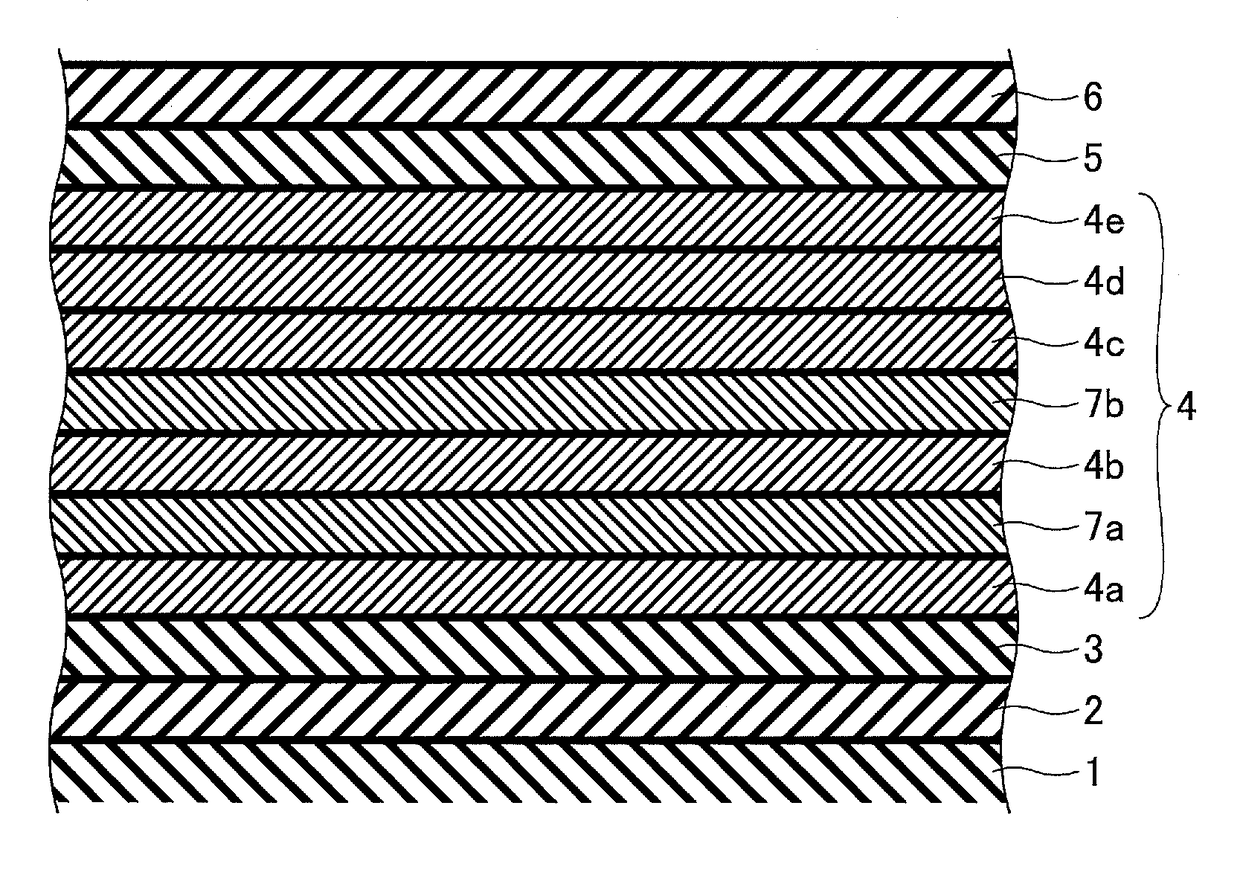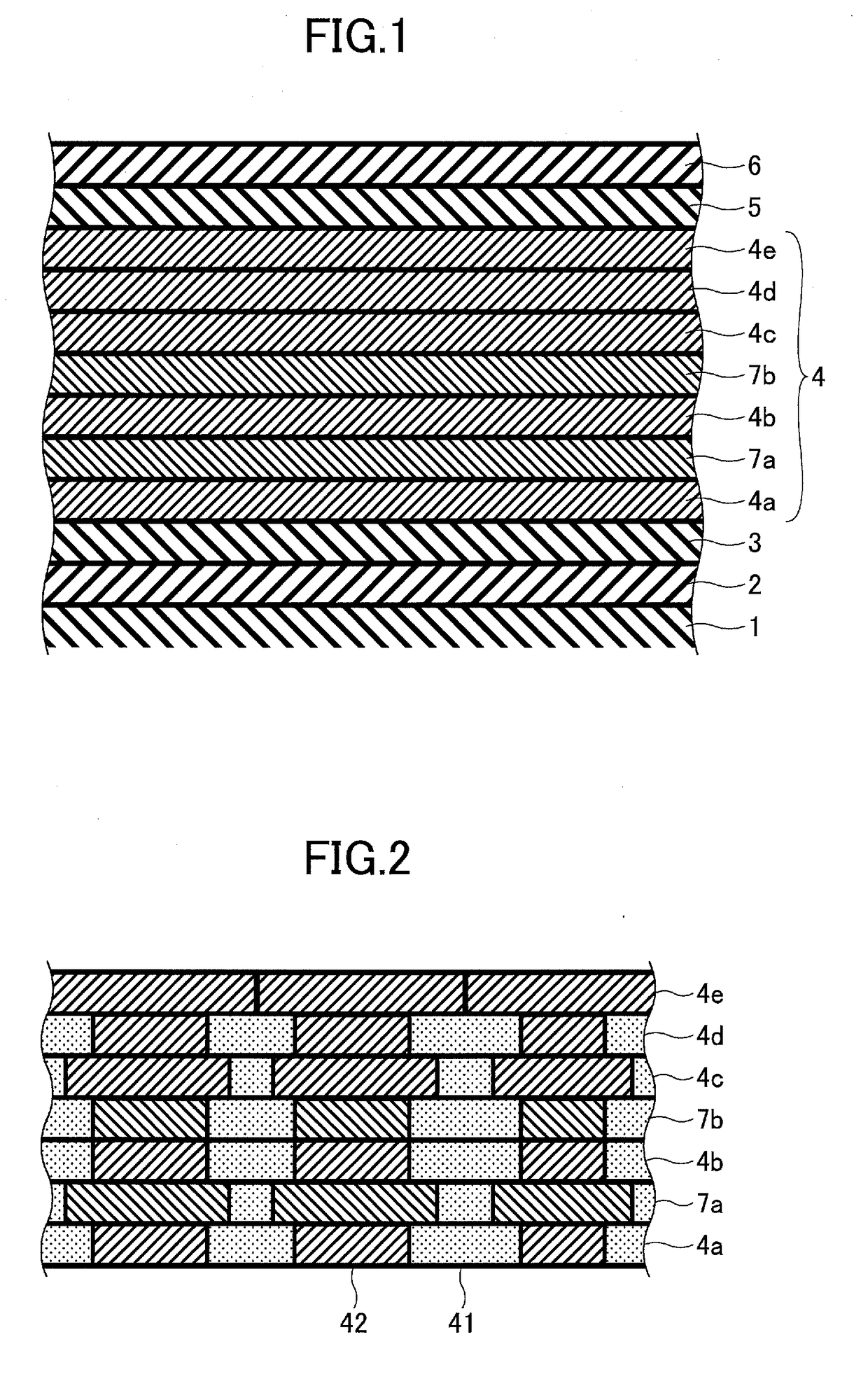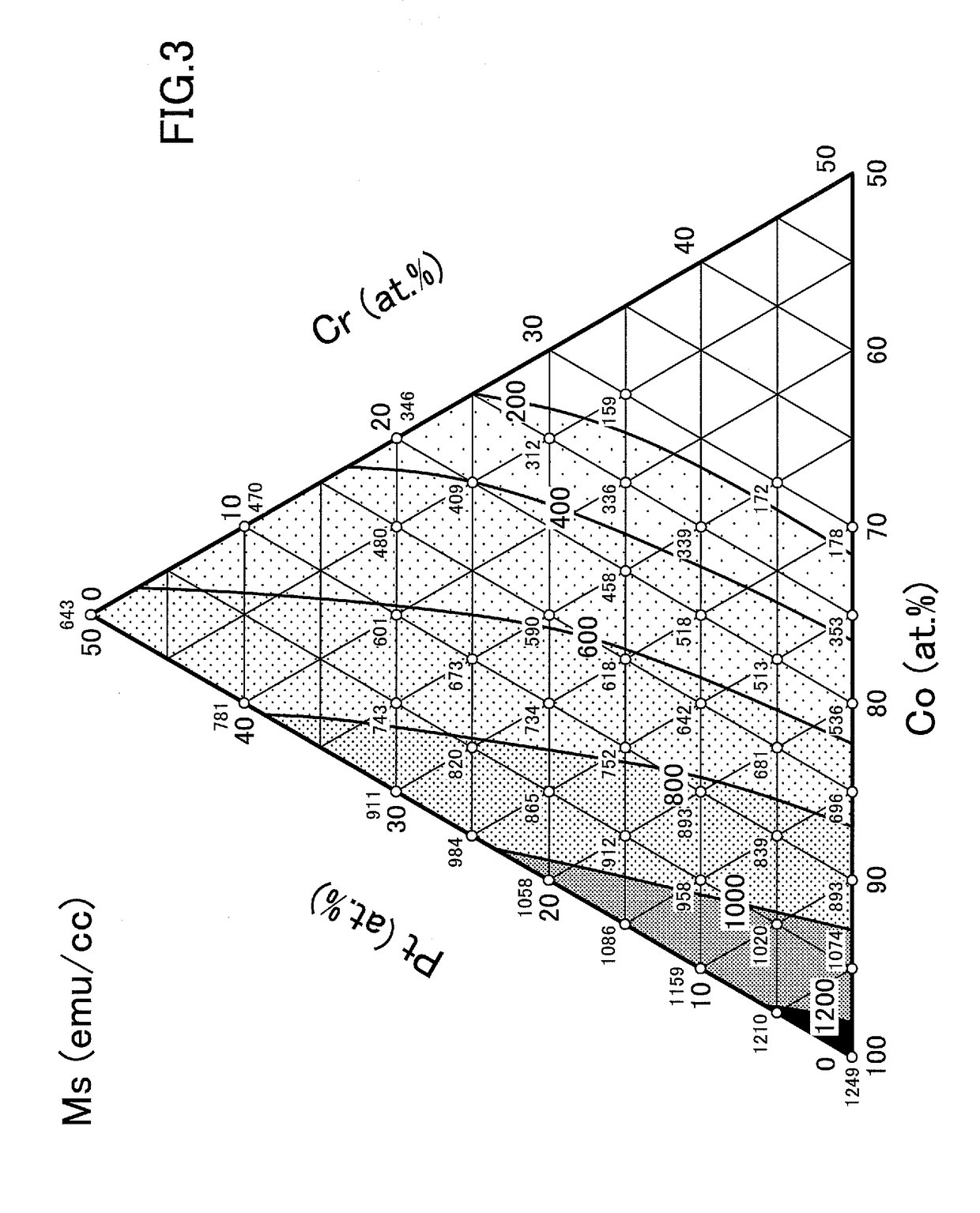Magnetic recording medium and magnetic recording and reproducing apparatus
- Summary
- Abstract
- Description
- Claims
- Application Information
AI Technical Summary
Benefits of technology
Problems solved by technology
Method used
Image
Examples
working examples
Working Examples 1 to 4 and Comparative Examples 1 to 6
[0067]Magnetic recording media according to working examples 1 to 4 and comparative examples 1 to 6 were produced by a manufacturing method described below.
[0068]A cleaned glass substrate (manufactured by HOYA Corporation, outer diameter: 2.5 inches) was put in a film forming chamber of a DC magnetron sputtering apparatus (trade name: C-3040, manufactured by Anelva Corporation), and the film forming chamber was evacuated until the ultimate vacuum reached 1×10−5 Pa. After that, an adhesion layer having a thickness of 10 nm was formed (deposited) on the glass substrate by using a Cr target. Using a target of Co-20Fe-5Zr-5Ta (content of Fe: 20 at. %, content of Zr: 5 at. %, content of Ta 5 at. %, and the rest: Co), a soft magnetic layer having a thickness of 25 nm was formed at a substrate temperature of 100° C. or lower. Then, a Ru layer having a thickness of 0.7 nm was formed on the soft magnetic layer and then, a soft magnetic l...
PUM
 Login to View More
Login to View More Abstract
Description
Claims
Application Information
 Login to View More
Login to View More - R&D
- Intellectual Property
- Life Sciences
- Materials
- Tech Scout
- Unparalleled Data Quality
- Higher Quality Content
- 60% Fewer Hallucinations
Browse by: Latest US Patents, China's latest patents, Technical Efficacy Thesaurus, Application Domain, Technology Topic, Popular Technical Reports.
© 2025 PatSnap. All rights reserved.Legal|Privacy policy|Modern Slavery Act Transparency Statement|Sitemap|About US| Contact US: help@patsnap.com



